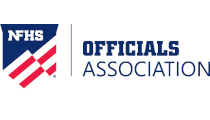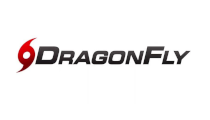Leg Maintenance: Protecting your Quads and Hamstrings
By Dr. Dan Davis on January 12, 2015 officials PrintQ: The importance of stretching and maintaining healthy leg muscles is paramount for officials. What leg muscles require proper maintenance so that we can run well on the court or field?
A: In addition to calves, there are two other key sets of muscles: quadriceps – or "quads" – and the hamstrings.
Q: Could you describe these muscles and what they do?
A: The quadriceps are a set of four muscles (hence the name: "quads") along the front of the thigh. They come together to form the patella tendon which essentially holds the kneecap inside a groove in your thigh bone (the femur), which by the way is the strongest bone in your body.
These are the muscles that bring your legs up and down when you are running up and down the court. The hamstring consists of three muscles on the rear of the thigh. They extend from the hip down into the knee. They rotate your knee in and out and try to keep your leg moving straight while balancing each other out. The quadriceps and hamstrings work together to move your leg. When you bend your leg, the hamstring muscles contract and the quads relax.
Conversely, when you straighten your leg, the quads contract and the hamstring muscles relax. It's a bit of a balancing act and ideally one set of muscles isn't weaker than the other. Otherwise a strain could happen, or worse.
Another potential byproduct of weakness of thigh muscles is patella tendonitis. Weakness is usually the result of insufficient exercise, which underscores the need for you to get yourself in shape well before the season starts.
Q: What are the potential injuries to which quadriceps and hamstrings are susceptible?
A: Strains are one possibility and I'll get to that shortly. Cramps are more common than pulls or strains and are more common for hamstrings than for quads. As with most muscle cramps, they usually result from inadequate hydration. So, drink sufficient fluids and remember that water and calcium are both important to have in your body. A muscle strain or pull is another possibility. Hopefully if you incur such an injury, it’s only a pull or strain the muscle and not a tear.
Certain factors increase your risk for a pulled hamstring or quad. One is age – the older you are, the more prone you are to a pull. Another factor is a previous injury, which greatly increases the risk of future damage.
The third factor is simply a lack of flexibility, due mostly to failure to properly stretch the muscles beforehand. Conversely, the greater the flexibility of these muscles, the less prone they are to injury. I've written and talked extensively to you about the importance of properly stretching your calf muscles. That's no less important for quads and hamstrings.
The more severe injury is a tear of hamstrings or quadriceps muscles. There are various degrees of tears. In fact, sometimes a "pull" is really a tear.
Q: What should you do if you suffer a pull, strain, or tear of any thigh muscles?
A: It’s important to apply treatment immediately if such an injury occurs – starting with rest, then ice or some other cold therapy, and then compression and elevation of the leg. If you are planning to play through a strained hamstring, you should wrap it with an ACE bandage before going on the court. Even before that, use some sort of freezing liniment – such as Bio-Freeze – and then wrap with the ACE bandage. Or, wear compression shorts that provide a fair amount of compression.
A tear, however, is a more serious injury and may require an MRI to determine the extent of the injury. A minor tear could take a minimum of three to six weeks to begin to heal and up to three months to fully heal. A serious tear could require a surgical repair, which could take three to six months to heal before you could return to the court. That is a powerful reason to try and avoid or prevent tears at all costs.
Q: How can you prevent or at least reduce the probability of incurring a quad or hamstring pull or tear?
A: It all comes down to proper stretching techniques. Unfortunately most of our colleagues do not stretch properly, or if they do stretch properly, they don't stretch often enough to get the quads and hamstrings sufficiently flexible to avoid injury and provide the strength and speed needed to run up and down the court. The good news is that the proper techniques are simple to learn and execute.
The key point to remember is that quads and hamstrings are sets of muscles, not individual muscles. Consequently, one move or series of moves does not stretch the entire group. It takes three separate sets of stretches for each muscle group. If you only do one of them, which is what most people do, you have a 66% chance of incurring a hamstring or quad pull.
Getting yourself in shape before the season is imperative. A key ingredient for being in proper condition is stretching your various sets of leg muscles: calves, quads, and hamstrings. The better shape you are in, come game time, the better able you will be to run and get in proper position to make the right calls, and the less your chance of injury.
Try to get in the habit of performing the proper stretch techniques for all your major leg muscles: calves, quads, and hamstrings. Protect your legs so you can run and remain injury free.
Proper “Wall Stretching Exercises”
1. For full benefit, do these exercises with your shoes off.
2. Place your feet the length of one of your feet away from the wall (or door jam).
3. Point both toes in, toward each other.
4. Bring your pelvis into the wall (or door jam).
5. Keep your knees locked.
6. You MUST keep your heels on the ground.
7. Hold the stretch for 15 seconds, then relax for 5 to 10 seconds. This should be repeated 10 times. Holding the stretch for much longer than 15 seconds offers no additional benefit, and may in fact hurt you. Ideally, these exercises should be done at least once a day, and try and do more than one set on the day of a game, if possible.
8. If your calf muscles hurt when doing this stretch, then you should move in closer to the wall (or door jam) in one-inch increments.
If you do not feel a stretch on the calf muscle or after you have performed the exercises consistently and feel less of a stretch, then you can move back to one of your feet away, in one-inch increments.
Dr. Dan Davis
Dr. Dan Davis is a long-time Connecticut high school basketball official and a well respected podiatrist and surgeon who has successfully treated many fellow officials to keep them on the court.
Most Recent Articles
- nfhs news NFHS Learning Center Delivers 25 Millionth Course
- Track & Field/Cross Country article Effective Communication with Athletes and Coaches
- nfhs news Player Equipment Changes Highlight 2025 High School Football Rules Revisions
- Player Equipment Changes Highlight 2025 High School Football Rules Revisions
- nfhs news Judgment Call on Second Contact Eliminated in High School Volleyball






